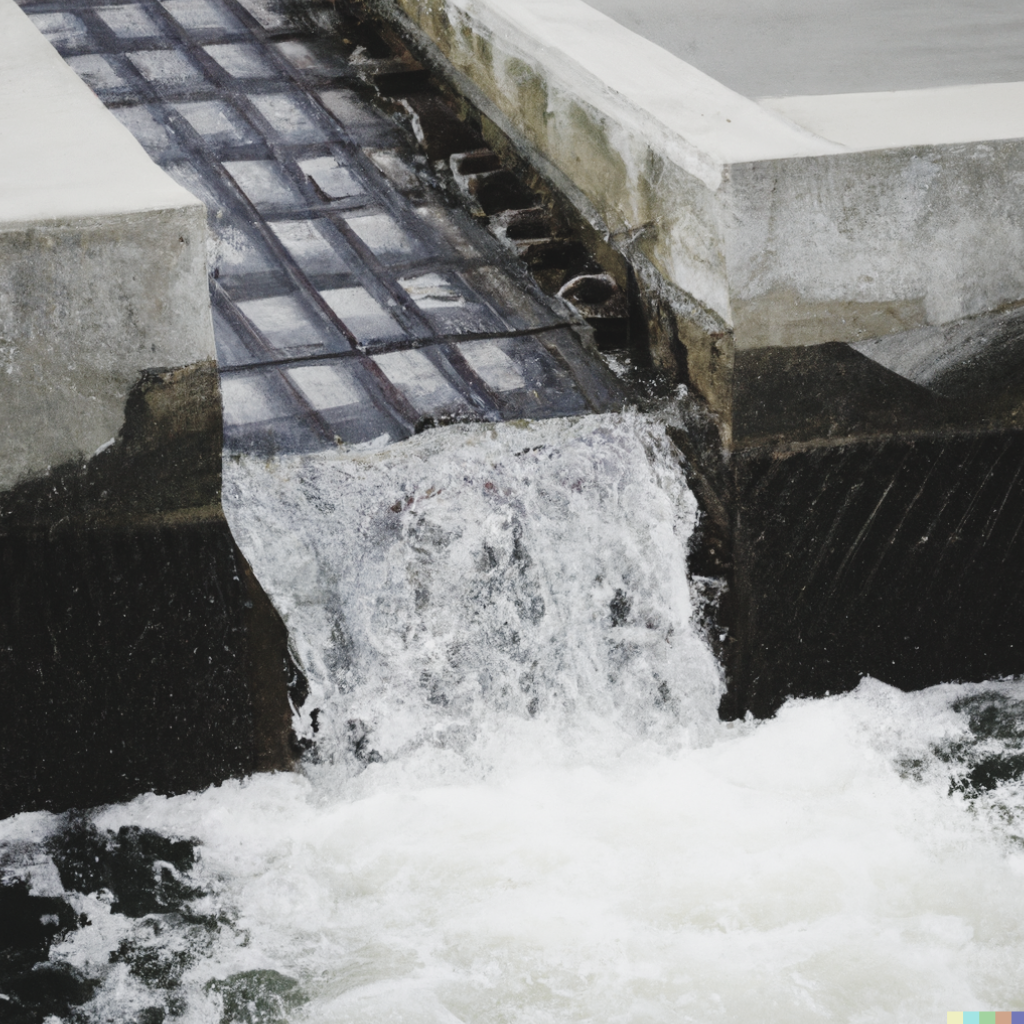Table of Contents
Definition:
A hydraulic jump is a sudden change in the height of water. It often happens when water flows over a weir or sluice gate and forms a “foaming front.” It is similar to a shock wave.
Description
Hydraulic jump is a phenomenon that happens when a fast-moving liquid in an open channel, such as a river or canal, slows down and rises sharply. This happens because the liquid’s initial kinetic energy is turned into potential energy and some is lost as heat due to turbulence.

The hydraulic jump is more abrupt when the initial flow velocity is higher. It may also be accompanied by turbulence, waves, and other disturbances. It only occurs when the initial fluid velocity is above a certain critical level.
Formula Of Hydraulic Jump
The formula for the energy loss during a hydraulic jump is given by the change in hydraulic head, H, which is equal to the initial head, h, plus the velocity head, q^2/(2gA^2). The efficiency of the hydraulic jump is then given by the ratio of the change in hydraulic head to the initial hydraulic head, or η=ΔH/H1. In this formula, q is the flow rate, g is the acceleration due to gravity, and A is the cross-sectional area of the flow
Types Of Hydraulic Jump
1. Wavy Hydraulic Jump
Undular jumps are irregular, not properly shaped, and have turbulence in the water particles.
2. Weak Hydraulic Jump
A weak jump occurs when the speed in the water is very slow and the water particles are not stable and flow in different ways.
3. Vibration Hydraulic Jump
As the oscillating jet enters a supercritical state, an oscillating jump occurs where numerous particles begin to oscillate clockwise or counterclockwise, creating light tides or waves on the upper surface. Flow also depends on strong unidirectional air currents.
4. Stable Hydraulic Jump
In stable jumps, the surface of the bed is so rough that the particles tend to travel in one direction with high velocity and turbulence, resulting in high frictional losses in this type of jump.
5. Powerful Hydraulic Jump
A strong jump is a full jump that occurs when there is high friction loss, equal air pressure distribution, and very high speeds, resulting in losses. This jump is highly preferred in dam structures because water changes state from supercritical to subcritical in a very short time compared to all other types of hydraulic jumps.
